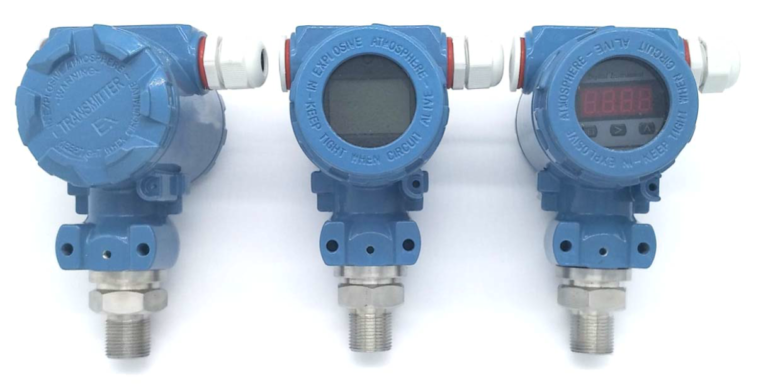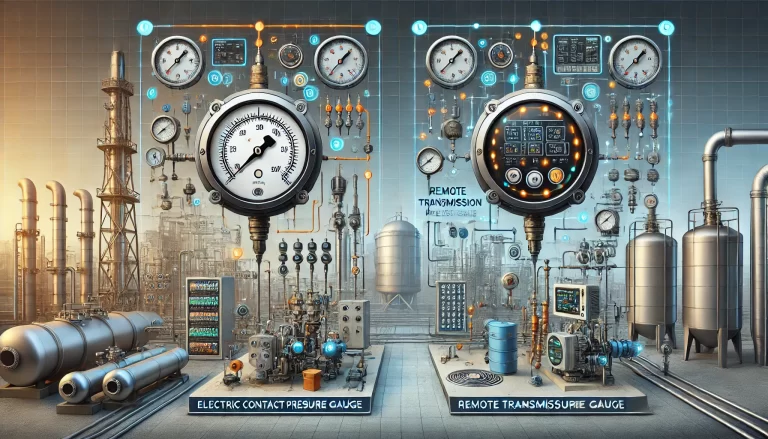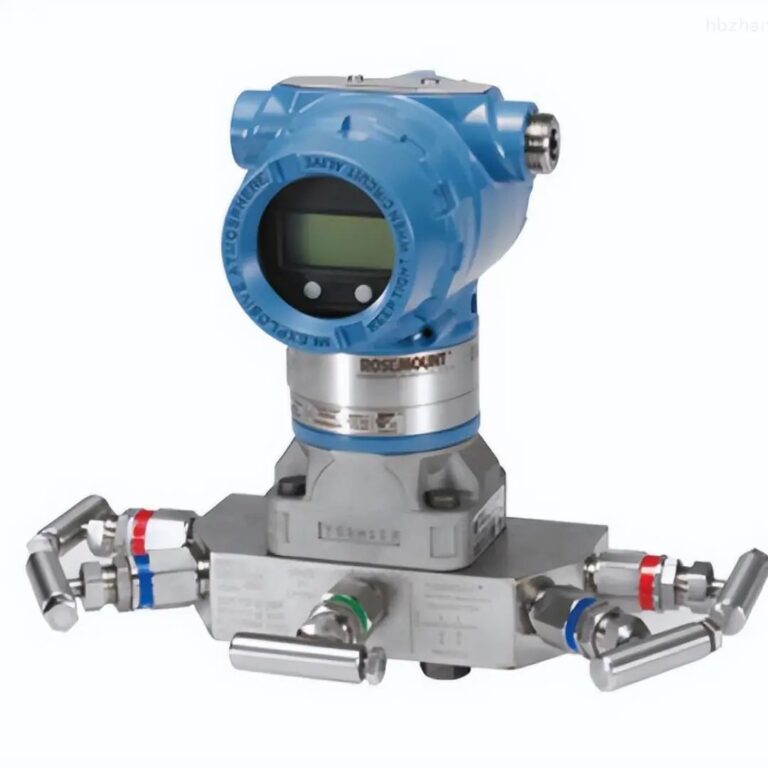Causes and Solutions
Pressure measurement is a crucial parameter in petrochemical production, with various measurement methods available. Among them, pressure transmitters are widely used for direct pressure measurement, while differential pressure transmitters are employed for measuring pressure differences. However, in real-world applications, incorrect readings or abnormal fluctuations in pressure and differential pressure transmitters are common issues. This article provides a comprehensive analysis of the typical failures encountered in these instruments and their corresponding troubleshooting methods.

Common Faults in Pressure Measurement
1. Unstable Pressure Indication with Large Fluctuations
Cause Analysis:
Before troubleshooting, compare the pressure reading with other process parameters such as temperature, flow, and liquid level.
If these parameters change correspondingly, the pressure fluctuation is likely caused by process variations rather than a malfunctioning pressure transmitter.
If other parameters remain stable while only the pressure fluctuates, determine whether the system includes a pressure control loop. If so, the fluctuations may originate from the control system rather than the transmitter itself.
If the system lacks a pressure control loop, the instability may result from issues with the pressure transmitter or signal transmission.
Troubleshooting Steps:
Close the pressure transmitter’s shutoff valve and open the vent valve to relieve pressure. Check whether the transmitter displays zero pressure.
If the reading returns to zero, the transmitter is likely functioning correctly.
If the reading remains incorrect, inspect the transmitter.
Examine the signal cable from the transmitter to the Distributed Control System (DCS) cabinet.
Look for damaged shielding, loose connections, or oxidation of exposed cable cores, as these can cause severe signal fluctuations.
If the pressure measurement medium is steam, inspect the condenser’s liquid level and the heating system.
Excessive heating may cause the condensate to evaporate, leading to an unstable pressure reading.

2. No Pressure Indication
Possible Causes:
Power supply failure: Check fuses or surge protection components.
Signal line disconnection: Inspect for open circuits in the transmitter’s wiring.
Different DCS systems handle open circuits differently, so observe the system’s alarms or indications for further diagnosis.
Troubleshooting Steps:
Check the power supply voltage at the transmitter terminals.
Inspect the signal cables and terminal connections from the transmitter to the control system.
Test continuity in the wiring using a multimeter.
If necessary, replace the transmitter to verify functionality.
3. Pressure Indication Remains Constant Despite Process Changes
Possible Causes:
Blocked pressure impulse lines.
Faulty pressure transmitter (e.g., electronic board or diaphragm damage).
Troubleshooting Steps:
Attempt to flush the impulse lines to remove any obstructions.
If flushing does not resolve the issue, calibrate the transmitter using a pressure source.
If calibration fails, consider replacing key components such as the transmitter’s electronic circuit board or sensing diaphragm.

4. Large Deviation in Pressure Indication
Possible Causes:
Zero drift in the transmitter, particularly in low-range models.
Non-linearity in transmitter output.
Troubleshooting Steps:
Verify and adjust the transmitter’s zero point.
Conduct a pressure calibration test to ensure linearity in output.
If deviations persist, recalibrate or replace the transmitter.
Common Faults in Differential Pressure Transmitters
Many differential pressure transmitter failures resemble those of pressure transmitters. Below, we focus on faults unique to differential pressure transmitters.
1. Incorrect Differential Pressure Readings
Typical Faults:
Indication is the reverse of expected values.
Indication remains at zero or at extreme values (maximum/minimum).
Possible Causes and Solutions:
Reversed impulse line connections: Verify and correct the positive and negative pressure sides.
Zero differential pressure despite process variations: Check local pressure gauges to confirm actual differential pressure.
If actual pressure is non-zero, check the transmitter and three-valve manifold for issues.
If the differential pressure reading initially works but gradually declines to zero, a leaking equalization valve may be to blame.
Persistent maximum or minimum differential pressure reading:
Check for phase changes in the impulse lines.
Gas condensation in the negative impulse line or liquid vaporization in the positive impulse line can lead to erroneous readings.
If condensation or vaporization occurs frequently, consider using heat tracing or insulation.
Ensure that condensation or isolation tanks are adequately filled.

2. Errors in Differential Pressure-Based Level Measurement
When a differential pressure transmitter is used to measure liquid levels, errors may arise due to improper zero adjustment or process variations affecting fluid density.
Key Considerations:
Zero shift due to incorrect impulse line installation:
Properly calculate span and zero adjustment based on impulse line spacing and fluid density.
Condensation or vaporization issues:
Ensure impulse lines allow condensed or vaporized liquid to return to the vessel instead of accumulating in the negative impulse line.
Periodically replenish impulse lines with the correct fill fluid if necessary.
Use of isolation fluid:
If an isolation fluid is used, account for its density in calculations.

3. Errors in Differential Pressure-Based Flow Measurement
Flow measurement using a differential pressure transmitter depends on accurate installation and impulse line management.
Troubleshooting Flow Measurement Errors:
Check the orientation of the primary flow element (e.g., orifice plate) and impulse line connections.
Verify that impulse lines are correctly filled based on the measured medium:
Gas flow measurement: Mount transmitter above the tapping point to allow condensate to drain.
Liquid flow measurement: Mount transmitter below the tapping point to keep impulse lines filled with liquid.
Steam flow measurement: Install the transmitter below the tapping point with condensate pots to maintain a stable fluid column.
Avoid unnecessary draining or venting:
Draining the impulse lines may disrupt measurement accuracy if not promptly refilled.
Opening the equalization valve can cause temporary measurement errors due to pressure imbalance.

Conclusion
In industrial applications, faults in pressure and differential pressure transmitters occur frequently. However, most of these issues arise not from the transmitters themselves but from external factors such as impulse line blockages, wiring faults, and environmental conditions. Systematic troubleshooting, thorough analysis, and proper preventive maintenance are crucial to ensuring accurate and reliable measurement results. By following the best practices outlined in this article, engineers can effectively diagnose and resolve issues, improving overall process efficiency and safety.
